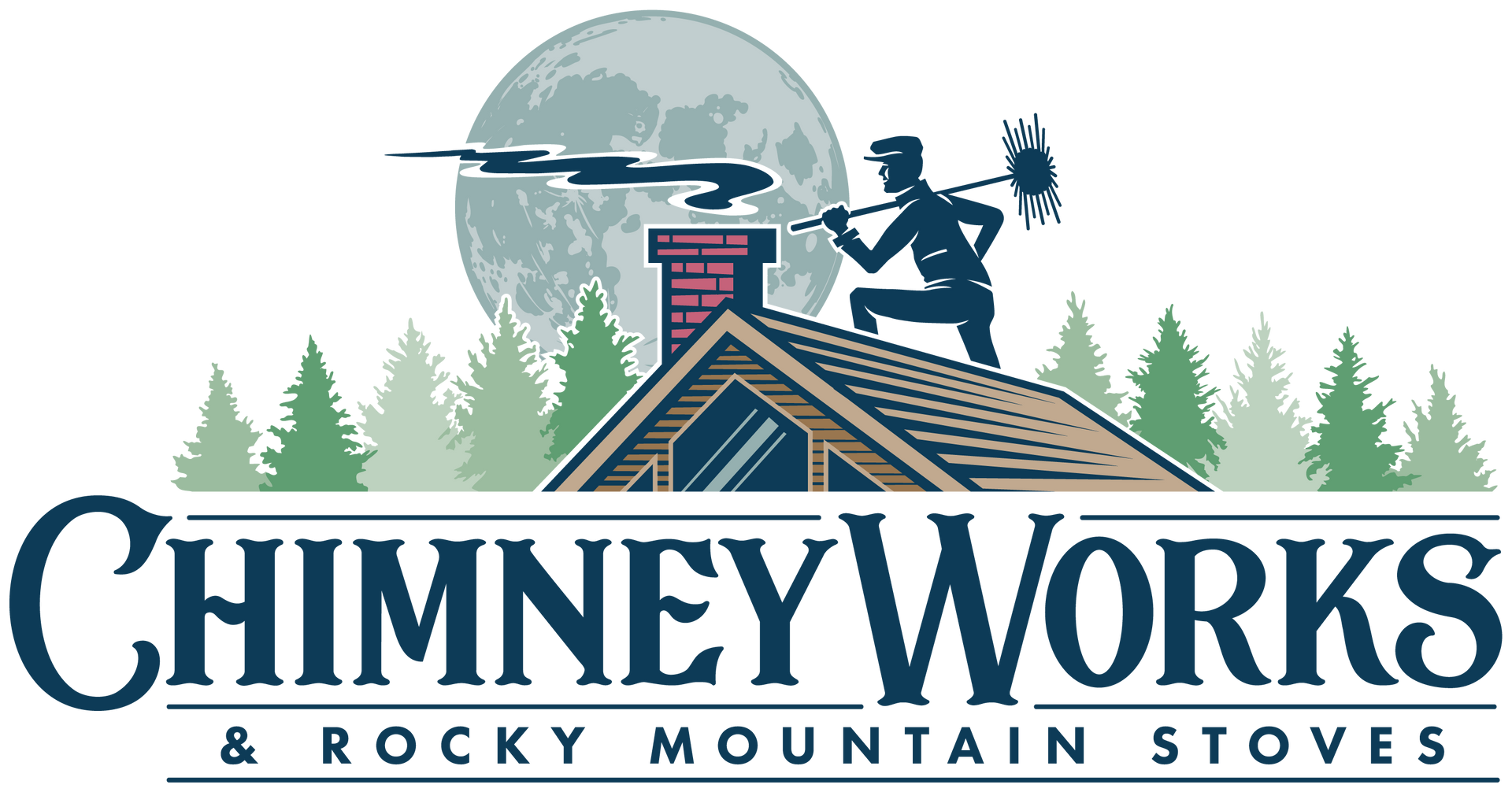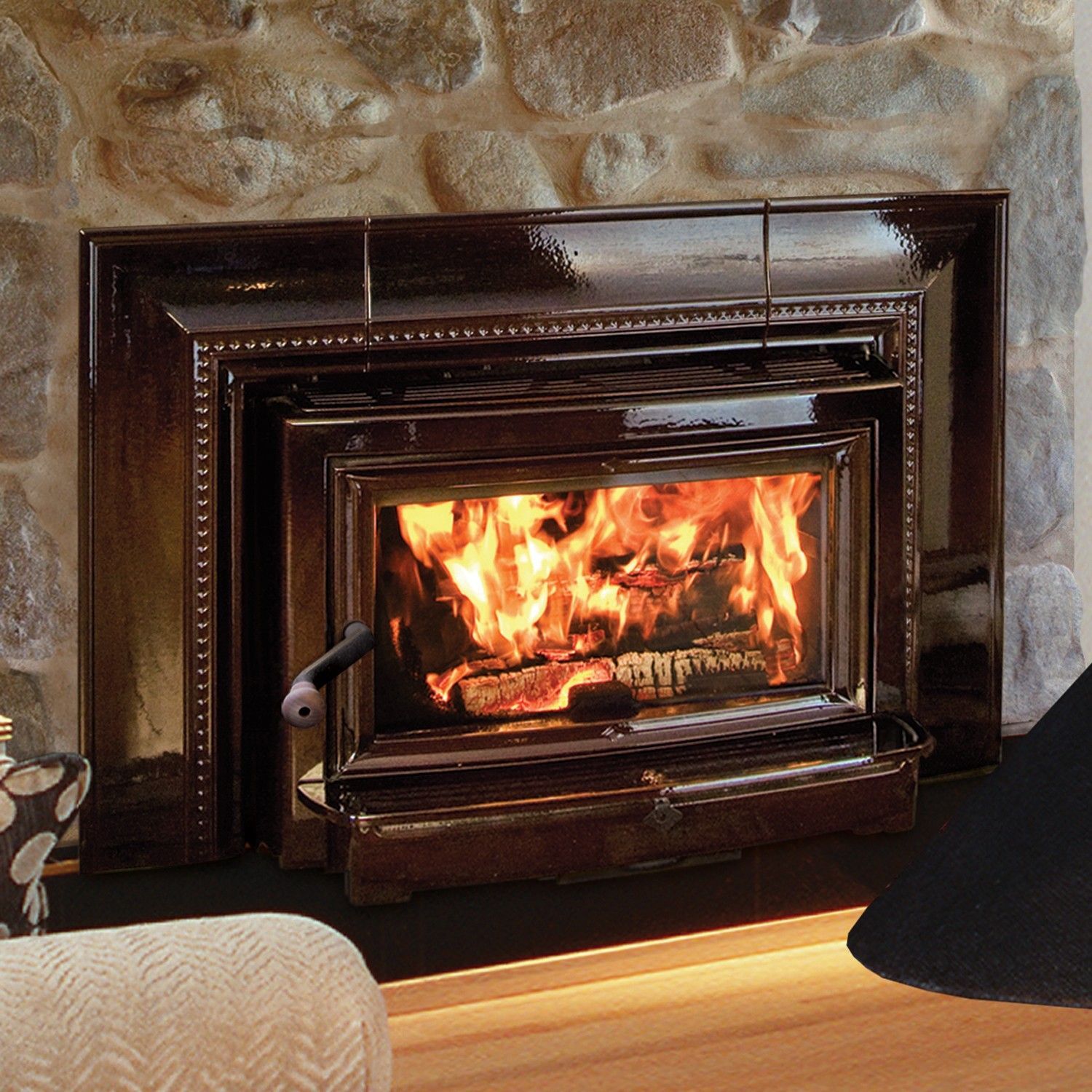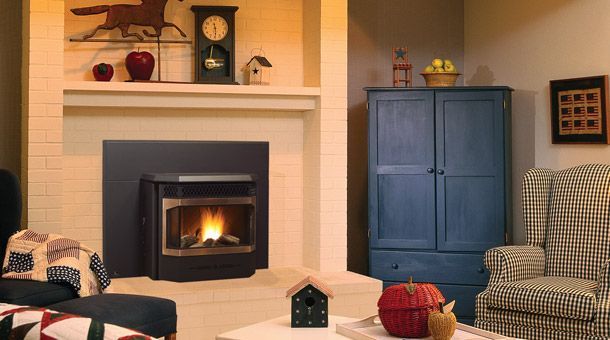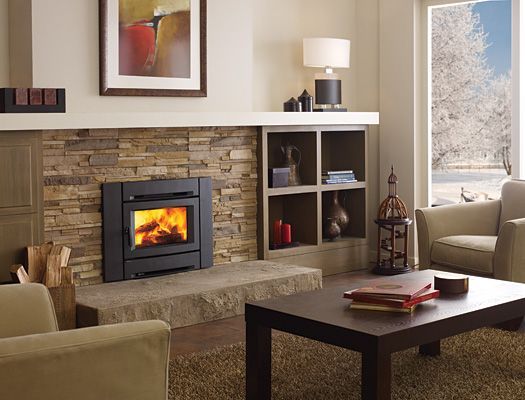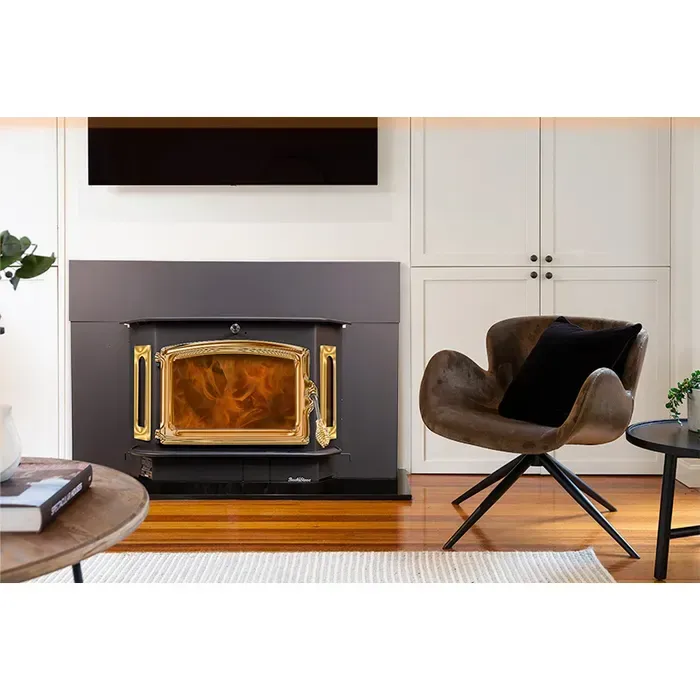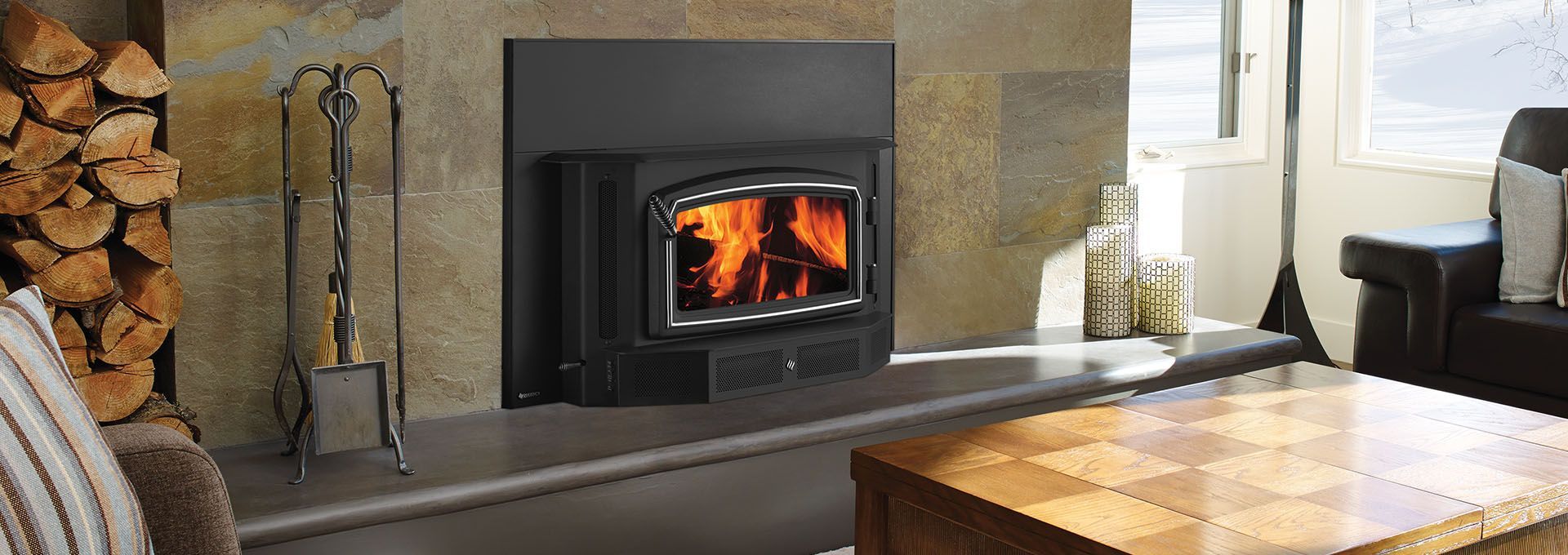Buyer’s Guide: Fireplace Insert
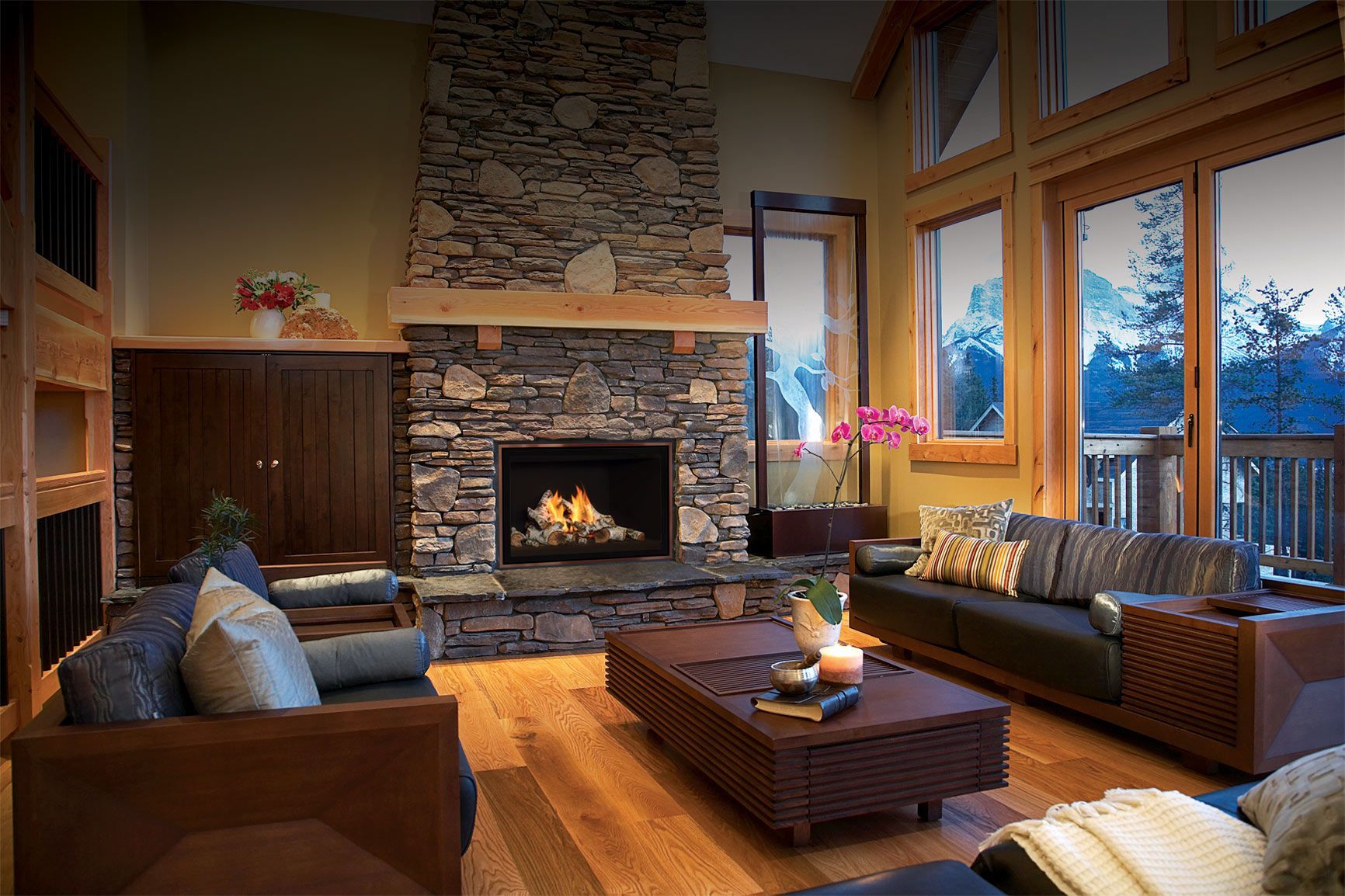
If you have ever owned a home with an open masonry fireplace and no insert, you might recall cold days where building a fire seems to actually make it colder in your home. That’s because your open masonry fireplace can allow as much as 90% of your fire’s heat to escape out the chimney. By adding a Fireplace Insert, you will keep the heat in your home. Inserts are ready to install and fit easily into your existing fireplace. Increase the value of your home and decrease your monthly heating bill.
What is a fireplace insert?
A fireplace insert is a closed firebox that fits right into an existing fireplace to increase efficiency. It’s called an insert for a reason, as you literally “insert” the unit right into your fireplace.
Unlike an open masonry fireplace, the fireplace insert has a door that doesn’t let cold air come down the chimney and into your home. The fire burning in a fireplace insert is completely contained, and a blower circulates the heated air around the insert and forces it out into your home.
Types Of Fireplace Inserts
Inserts are available for burning wood, wood pellets, or burning gas. All of these types of inserts come standard with a blower. The blower is just a hidden fan attached to the unit that helps circulate the heated air in your home.
Think of each type of insert as a mini-stove that now lives in your fireplace. Each type carries different pros and cons, which we will list here.
Wood Inserts
Wood inserts burn – wood – firewood in particular. If you have access to timber to split your own firewood, you will find this type of appliance paying for itself in short order.
Pros
- Provides warmth and ambiance that can not be replicated by any other heating method
- Extremely cost-efficient primary or secondary heating if you have access to firewood
Cons
- Many people do not have access to cheap or free firewood
- Chopping and gathering wood is hard work (but I think its fun)
- Wood gathering requires some expensive equipment, like a chainsaw and a log splitter
- Burning wood creates ash, and you have to empty your fireplace of ash frequently, and then put the ashes somewhere
Pellet Stove Inserts
A pellet insert uses pellets of wood for fuel, fed to the fire by an automated auger that pulls pellets out of a hopper above. As such, these inserts will require electricity to operate, but many models have a battery back-up feature to allow operation in the event of a power outage. Pellet inserts are a bit harder to find than a traditional wood burner or a gas insert.
Pros
- Extremely efficient use of fuel
- Produces a good amount of heat
- Almost no ash is produced for the burning process
- Pellet fuel is widely available at big box stores
- Some come with a remote!!
Cons
- Pellet inserts are hard to find
- You have to pay for pellet fuel, and you will use a lot of pellets
- You can easily go through 1 40 lb. bag of pellet fuel per day
- You have to re-fill the hopper regularly
- You have to use good pellet fuel (not the cheap stuff)
Keep an eye on pellet inserts, as technology advances these become a more and more viable option for heating.
Gas Stove Inserts
While many homeowners with masonry fireplaces install a gas log set, a gas insert is actually a better option if the goals are heat and efficiency. These inserts use gas to create a no-mess fire that produces great heat for your home.
Pros
- No ash to clean up
- Clean burning/good for the environment
- No indoor air quality issues
- No hunting for firewood/pellets
- Some models require no ventilation (check your local codes)
Cons
- Requires a gas line be run or an existing gas line to be present
- Your gas bill will go up from use
Ventilation
Regardless of which type of insert you choose, you will need to consider ventilation. Unless you have done your code homework and can install a no vent gas insert, you are going to need a 6-inch ventilation pipe running from your insert to the top of your chimney.
Do not try to install an insert without the 6-inch ventilation pipe, your fire won’t burn properly, you won’t get good heat and its dangerous.
We recommend going with a stainless steel flex pipe with a lifetime warranty. These ventilation pipes should be installed by a certified chimney professional.
Closing Thoughts
If you have an open masonry fireplace and you want to heat your home with it, you should get an insert. It will pay for itself before you know it and will last a lifetime with minimal maintenance. Selecting which type of insert to go with will come down to fuel availability and personal tastes
Success Story
Read a quick note from one of our reviews over at Chimney Works for an experience with a wood insert (Five Stars, just sayin …):
I PURCHASED A FIREPLACE INSERT A COUPLE OF YEARS AGO AND HAVE BEEN VERY HAPPY WITH IT. IT HAS PAID FOR ITSELF AT THIS POINT DUE TO THE REDUCTION IN OUR MONTHLY HEATING BILL. WHEN I WENT IN TO PURCHASE, THE STAFF WAS VERY HELPFUL AND TOOK TIME TO EXPLAIN EVERYTHING I NEEDED TO KNOW ABOUT MY NEW INSERT, RIGHT DOWN TO HOW TO PROPERLY CLEAN THE GLASS. I HAVE ALSO USED CHIMNEY WORKS FOR CLEANING MY CHIMNEYS. THEY ARE QUICK, CLEAN AND VERY PROFESSIONAL. THEY TOOK THE TIME TO WALK ME THROUGH SAFETY CONCERNS ABOUT ONE OF MY CHIMNEYS, WHICH IS VERY IMPORTANT TO ME SINCE I LIVE IN A LOG CABIN. THEY LEFT A NICE FOLDER WITH PAPERWORK FOR MY REFERENCE. DEALING WITH THEM WAS A PLEASANT EXPERIENCE AND I RECOMMEND THEM ANYONE IN THE CINCINNATI AREA.
.
The post Buyer’s Guide: Fireplace Insert appeared first on Chimney Works & Rocky Mountain Stoves.
Search the Outpost

